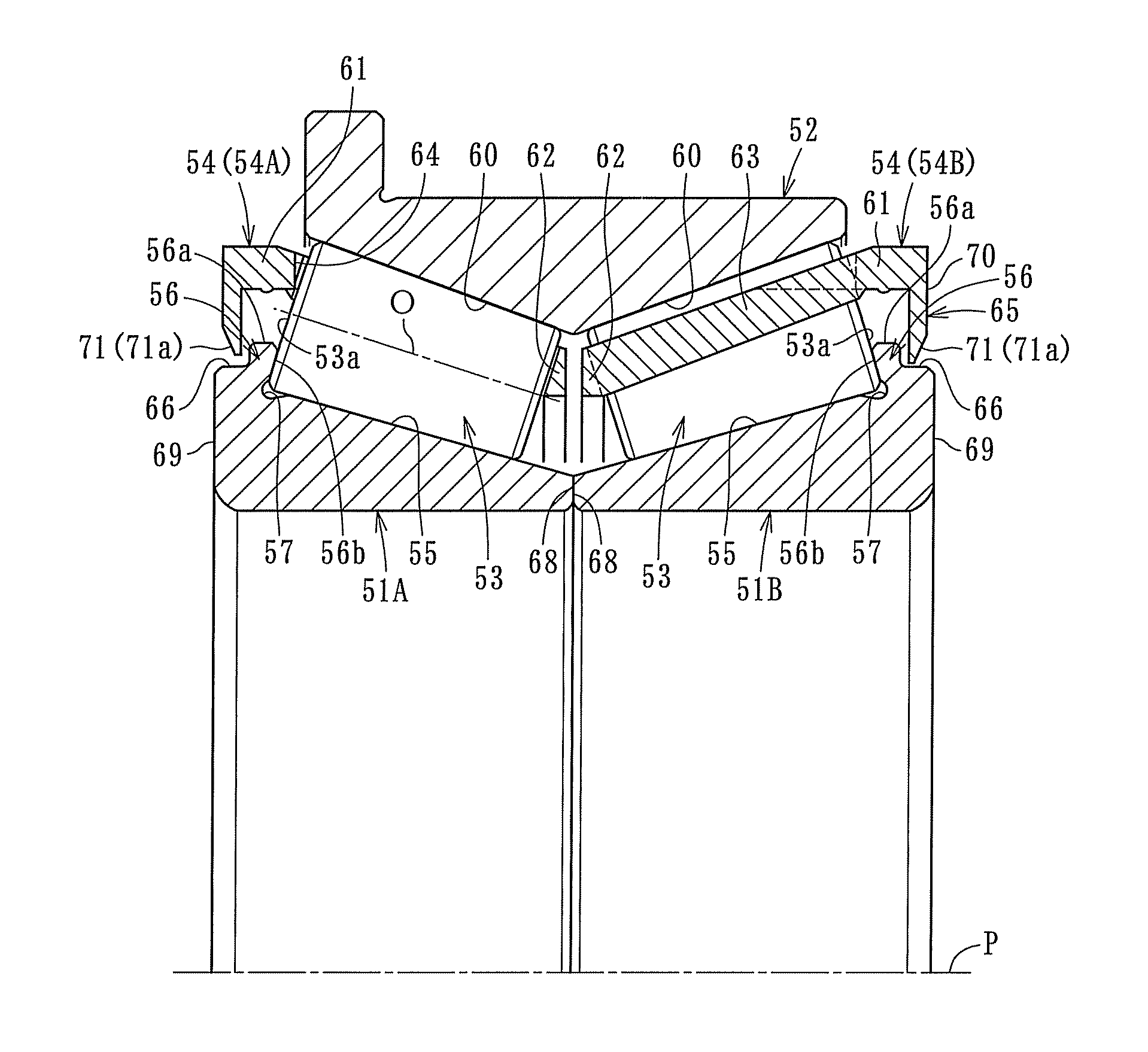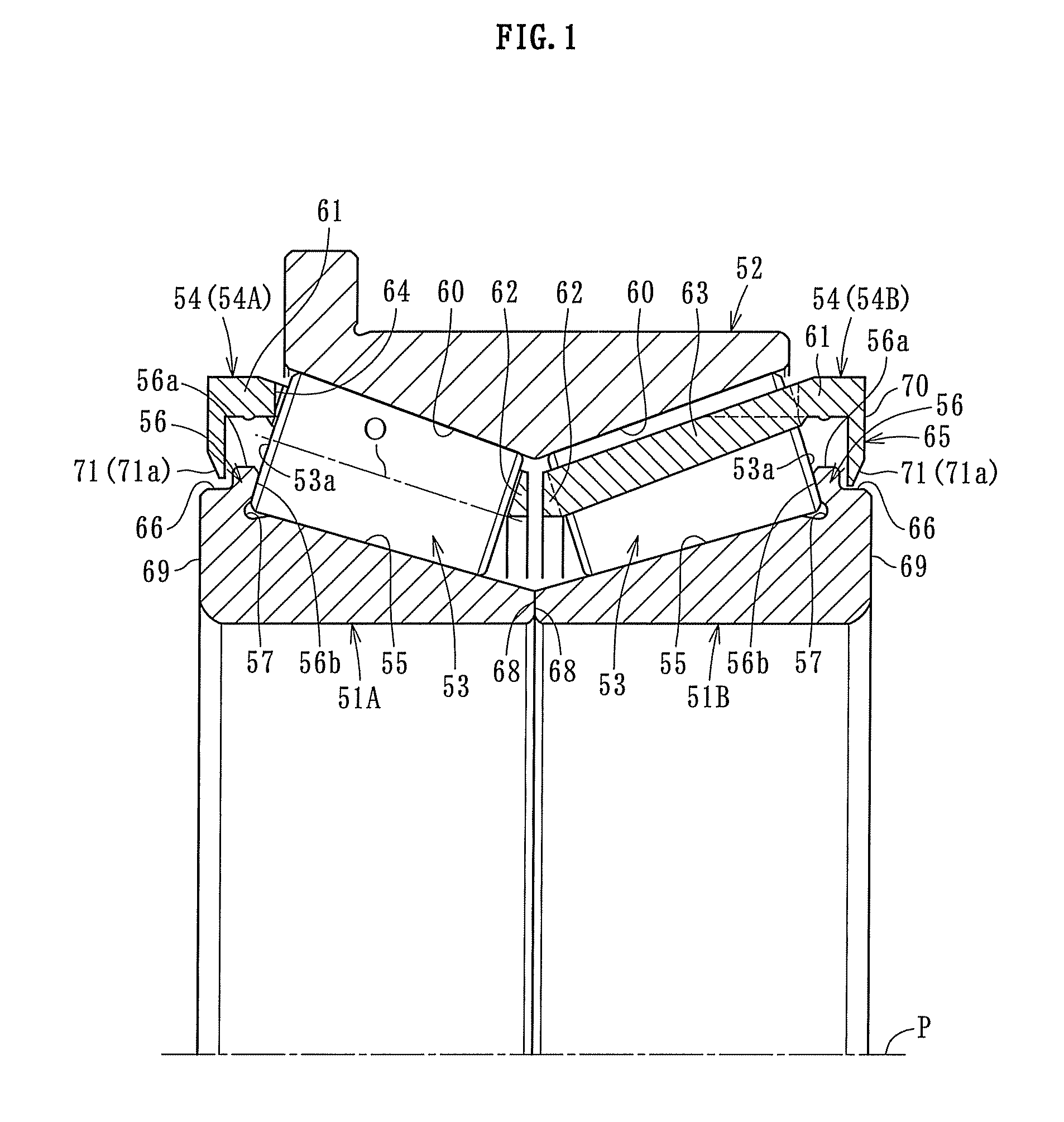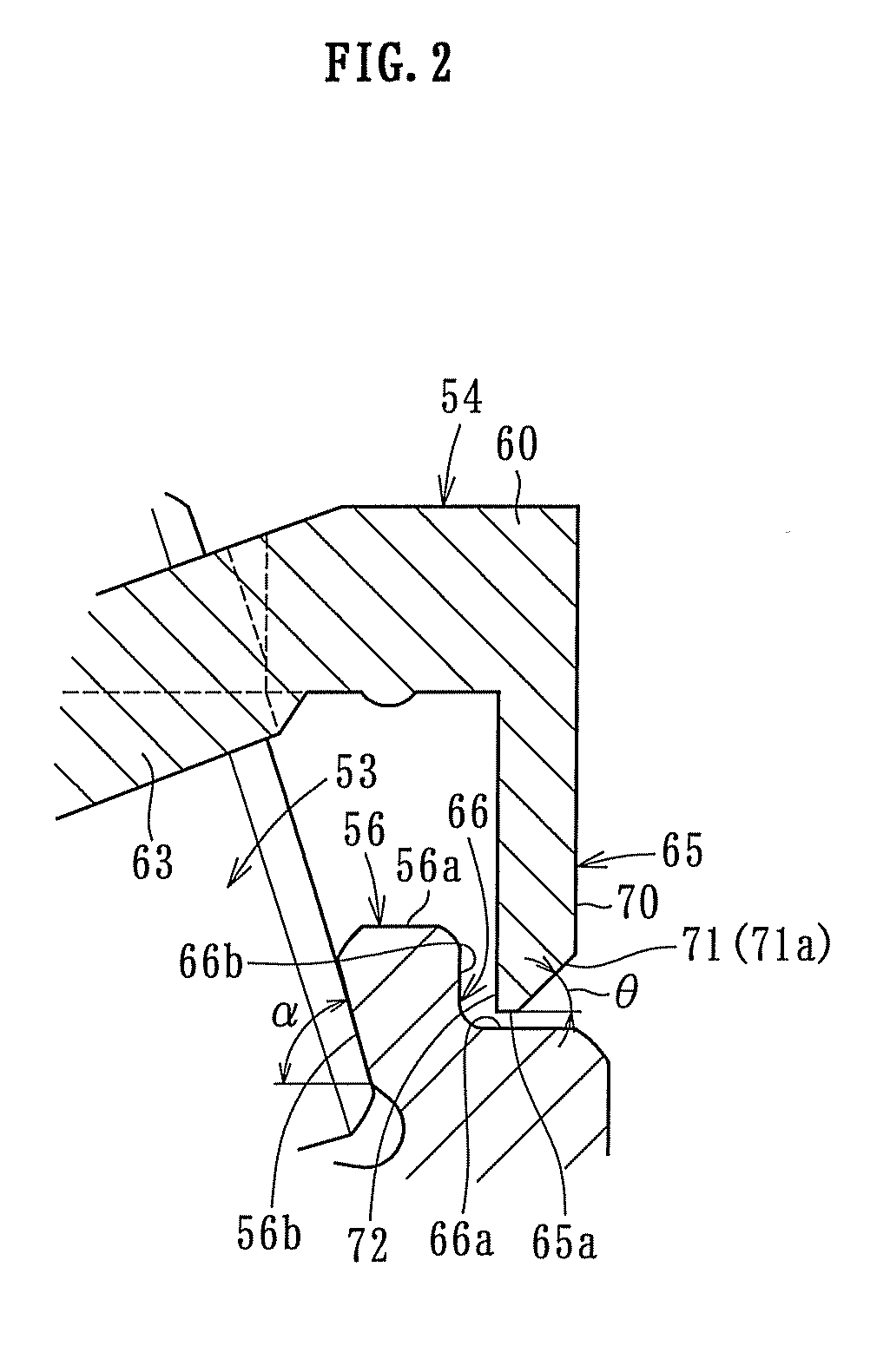Taper roller bearing
a taper roller bearing and roller bearing technology, applied in the direction of mechanical equipment, rotary machine parts, engine components, etc., can solve the problems of increasing the use environment of taper roller bearings used therefor, and the conventional limitation of an increase in load capacity, so as to increase the load capacity, reduce weight, increase the length of the axial center
- Summary
- Abstract
- Description
- Claims
- Application Information
AI Technical Summary
Benefits of technology
Problems solved by technology
Method used
Image
Examples
Embodiment Construction
[0057]In the following, an embodiment of the present invention is described with reference to FIGS. 1 to 5.
[0058]FIG. 1 illustrates a taper roller bearing according to the present invention. The taper roller bearing is a double-row taper roller bearing, which includes a pair of inner races 51A and 51B, an outer race 52, a plurality of taper rollers 53 arranged so as to be rollable between the inner races 51A and 51B and the outer race 52, and a pair of retainers 54A and 54B for retaining the taper rollers 53 at predetermined circumferential intervals.
[0059]Each of the inner races 51A and 51B has a tapered raceway surface 55 formed on a radially outer surface thereof, and a flange portion 56 protruding toward a radially outer side is formed on a radially larger side of the raceway surface 55. That is, the raceway surface 55 is formed from the flange portion 56 to a radially smaller end, and hence the flange portion is not formed on the radially smaller side unlike an inner race of a ...
PUM
| Property | Measurement | Unit |
|---|---|---|
| aperture angle | aaaaa | aaaaa |
| aperture angle | aaaaa | aaaaa |
| temperature | aaaaa | aaaaa |
Abstract
Description
Claims
Application Information
 Login to View More
Login to View More - R&D
- Intellectual Property
- Life Sciences
- Materials
- Tech Scout
- Unparalleled Data Quality
- Higher Quality Content
- 60% Fewer Hallucinations
Browse by: Latest US Patents, China's latest patents, Technical Efficacy Thesaurus, Application Domain, Technology Topic, Popular Technical Reports.
© 2025 PatSnap. All rights reserved.Legal|Privacy policy|Modern Slavery Act Transparency Statement|Sitemap|About US| Contact US: help@patsnap.com



